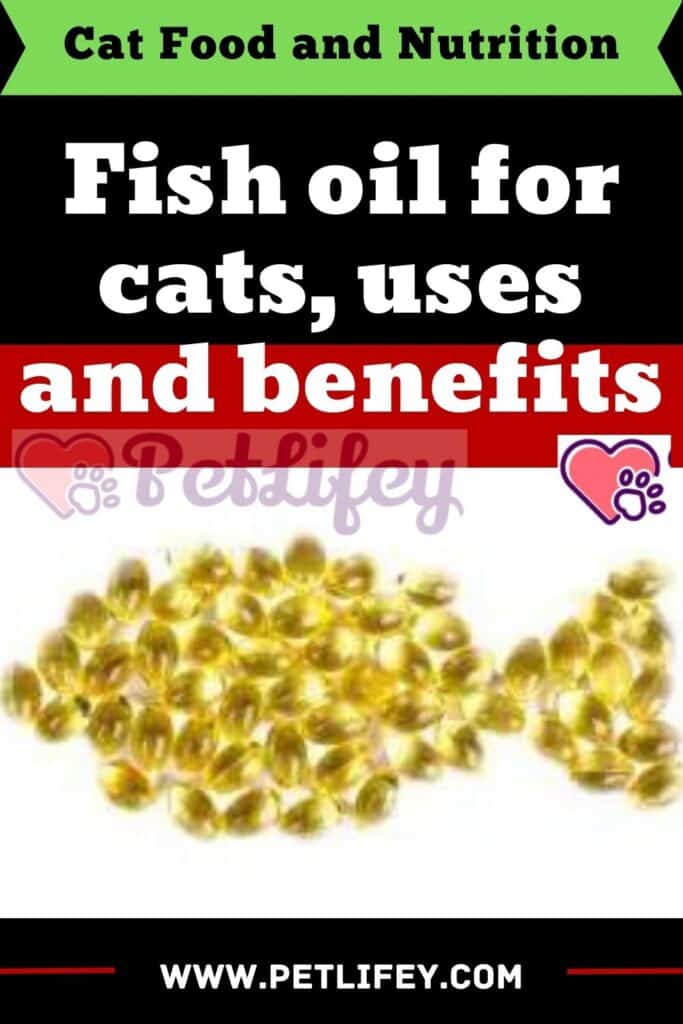
Fish oil for cats is becoming increasingly used as food for our cats. What are the benefits and how can it be used? Let’s find out together in our article.
Fish oil for cats is made from 100% salmon, enriched with essential Omega 3 fatty acids, vitamins A and D. In some stages of the cat’s life, it seems that the direct intake of chain omega-3 long, it is beneficial (in young cats during brain development, therefore in pregnant cats, during lactation and in growing puppies.
While it is of little use (or only at very low doses) in healthy, adult cats. Fish oil is the most generous dietary source of omega-three, especially eicosapentaenoic acid (EPA) and docosahexaenoic acid (DHA).
EPA and DHA are two essential fatty acids. The omega-3s we are talking about are present in: Herring, sardines and other large and small blue fish, cod, salmon and tuna are among the richest fish in omega-three.
Some of these, such as certain species of tuna, shark or blue shark and swordfish, should not be consumed in excessive quantities as their meat contains not only omega-3s, but also toxins such as polychlorinated biphenyls, dioxins, mercury and chlordane.
The characteristics of fish oil for cats
As we previously mentioned in the previous paragraph, these omega-3s are found mainly in blue fish, but among all we recommend avoiding cod liver because it does not have the necessary quantities, which is why the best intake is in the form of a supplement for cats.
As for the maintenance of this supplement, care must be taken, because it must be protected from light, heat and air. In liquid form in dark bottles in the refrigerator, it turns out to be the best storage method.
Another trick is to only buy the quantities that you can use in 1 or 2 months to prevent it from going rancid. If the oil becomes rancid, it may change its taste and smell and this will make it more difficult to feed into your cat’s food.
Always make sure by reading the labels of the products, that the oil is always as pure as possible, that it is free of chemical additives or preservatives, as they make the quality of the oil and its characteristics low. Cat fish oil produces various benefits in the animal, below you can read which ones:
- maintains the general condition of your pet;
- maintains brain functions;
- has a positive influence on the immune system;
- strengthens the heart and blood vessels;
- maintains the condition of the skin and gives a silky coat;
- contains vitamins A and D which improve the animal’s vision, but also the flexibility of its muscles;
- improves the cat’s hearing and vision;
- increases fertility;
- has an anti-inflammatory effect
- acts against arthritis, osteoarthritis and degeneration of the cartilage joints.
- regulates the level of cholesterol and triglycerides.
- reduces skin allergies.
How to administer fish oil for cats and in what doses

To give your cat fish oil, you need to make a simple calculation such as: if your cat is healthy, 0.5 g per day per 10 kg is more than enough. If you have any of the conditions mentioned above, or if you are a growing puppy or pregnant female, the dose can be doubled to 1g per day for 10kg.
Since the cat is a suspicious animal, it will not be easy to give it something new. Fortunately, we are able to cater for delicious high-end croquettes and home-made food. Some specific feeds for cats are equipped with fish oil, but it is also true that they suffer from the problem of oxidation , which is why it is necessary to pay close attention to the packages once opened.
It will be essential to close them carefully. As for homemade food, you will have to integrate it into the normal diet and at most replace it with olive oil, as we have seen for the dog. This ingredient must be present in every dish in order for your pet to get used to the flavor as well as the fact that it is essential for his diet.
Homemade recipes for the cat: fish dishes
Cod, spinach and carrots
Ingredients:
- 1 small slice of cod
- 3 tablespoons of grated carrots
- 1 handful of chopped spinach leaves
- fish oil
Method:
- crumble the cod and remove the bones;
- heat a little olive oil in a pan;
- add the vegetables first and cook them;
- then add the crumbled cod and flip it from time to time.
Wait for the dish to cool, add fish oil and the dish is ready.
Mackerel and vegetables
- 120 or 130 g of mackerel (headless and boneless);
- 30 or 40 g of cooked and chopped vegetables then grilled and cut into small pieces.
At this point, add a little fish oil and just a pinch of salt.
Both methods of administration (commercial kibble or homemade food) are adequate but it is always better to refer to the veterinarian.






